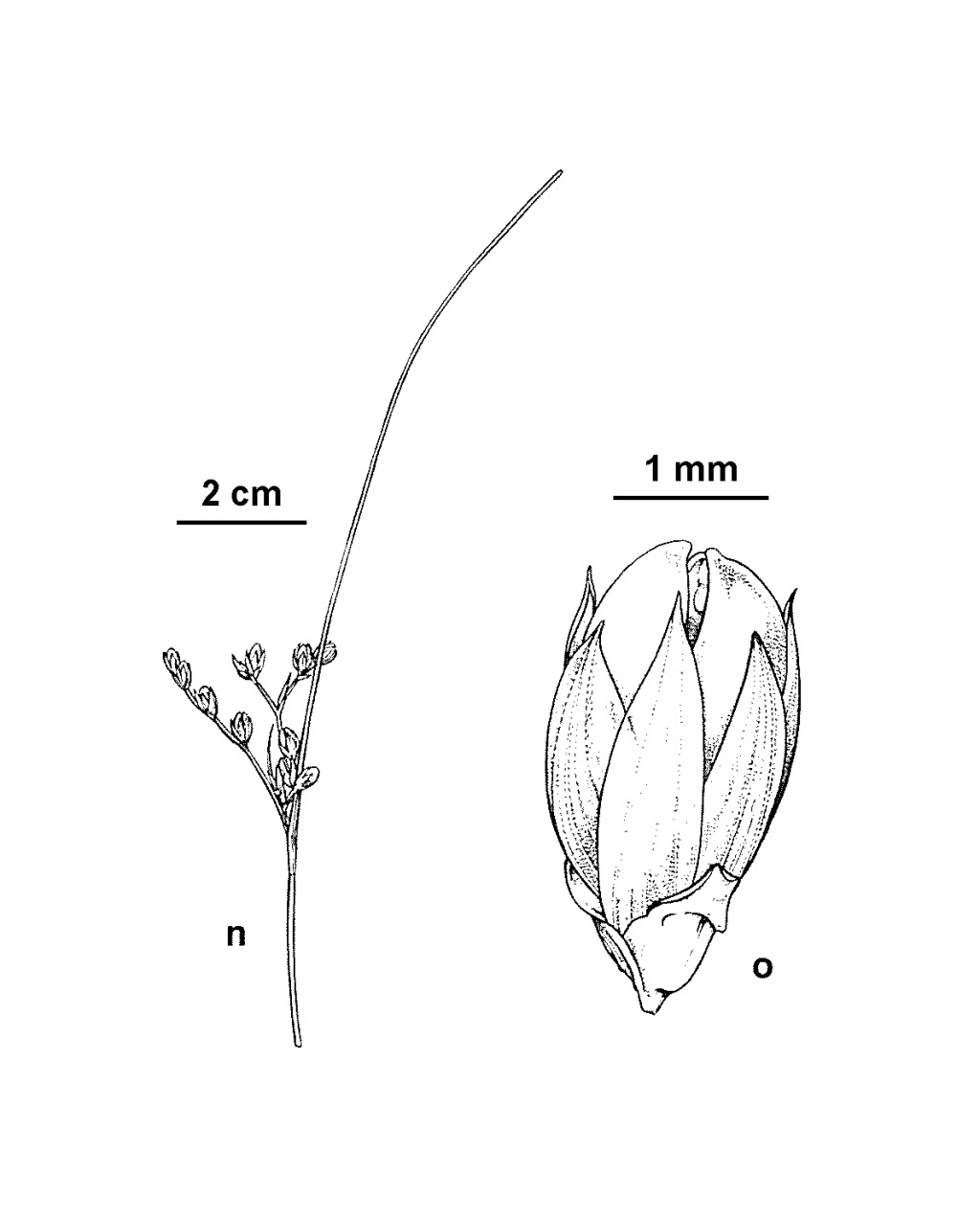Juncus imbricatus
LaharpeTufted, shortly rhizomatous perennial. Culms erect, 15–45(–80) cm high, each with up to c.4 leaves and 1–4 cataphylls towards the base, fibrous remains of old cataphylls ± persisting. Leaf-blades solid, usually shorter than the culms, 0.5–1 mm wide, shallowly and broadly channelled near base, narrowing and becoming sub-terete towards the midpoint, the underside and margin of channel with strongly raised nerves, apex acute or obtuse; auricles obtuse, c. 0.5 mm long. Inflorescence few-flowered, the flowers spaced or close together along the ascending branches, not forming distinct clusters; primary bract leaf-like, usually exceeding the inflorescence; prophylls present. Tepals with a broad green midrib when young, margins membranous contrasting reddish-brown, extending to the tip; outer tepals (3.5–)4–5.5 mm long, acute-acuminate; inner shorter or equal to the outer, acute or obtuse; stamens 6, anthers 0.7–1.4 mm long. Capsules reddish-brown at maturity, ellipsoid, c. 4–6.5 mm long, obtuse, much exceeding the tepals; seeds c. 0.4–0.6 mm long, slightly asymmetric, with very fine longitudinal and transverse ridges discernible only at high magnification, minutely apiculate at one or both ends. Flowering time not known, seeds shed Dec-Jan.
VVP, VRiv, GipP, Gold, HSF. Also naturalised in WA, NSW. Native to temperate South America. In Victoria, known from a few collections, near Bendigo, Echuca, Werribee and in urban Melbourne bushland.
Albrecht, D.E. (1994). Juncus. In: Walsh, N.G.; Entwisle, T.J., Flora of Victoria Vol. 2, Ferns and Allied Plants, Conifers and Monocotyledons, pp. 197–233. Inkata Press, Melbourne.
 Spinning
Spinning


